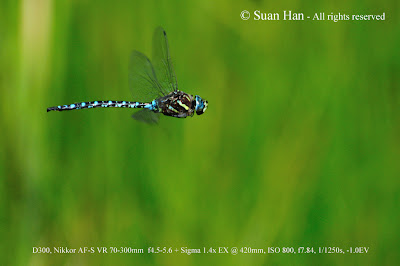Never mix any rechargeable NiMH - nickel–metal hydride cell or the NiCd - nickel–cadmium cell, and different type of batteries must be stored separately to avoid any contact.
All the time, I knew that I should not mix any batteries while charging and I thought it is fine to mix for using if the voltage in between is not much difference. Apparently, I was wrong! Indeed, I should avoid mixing them in any circumstances!
The dangerous part is that the problem or reaction will not be happen immediately. Depending on the battery types in use, the melting, burning or explosion could be happen in different duration of time. It could be either after half an hour, an hour or even couple hours later. For a while ago, when I first tested my Nikon MB-D10 battery grip by installing two sets of different type of NiMH batteries, I never noticed any abnormal thing happen. Because I just did a brief test for about 15 minutes only at that time. However, I experienced two incidents recently as follow, when I installed two combinations of two difference type of NiMH batteries in the Nikon MS-D10 holder.
Incident# 1:
1. Installation sequence as -2300mAh+(A)-2300mAh+(B)-1300mAh+(C)-1300mAh+(D)-1300mAh+(E)-1300mAh+(F)-2300mAh+(G)-2300mAh+(H)
2. This combination is barely usable because of the low 1300mAh NiMH batteries. However, I was able to get it work and tested for about 15 minutes on my D300. Then, I removed the MB-D10 grip from the camera and left the batteries in the BP-AA holder.
3. After about an hour later, I picked up the grip and felt it warm. Quickly removed the holder and I saw the battery (C) & (D) was heating up with the surrounding plastic starting to melt. I barely can touched the batteries but able to remove them with my finger nail.
4. The plastic around the battery (C) & (D) part melt & warped, and the + terminal of the battery (D) compartment was loose, so making no contact between battery (C) & (D). See red circles of the following photo.
I fixed the problem by heating up the holder with a heat gun, holding it 6" ~ 8" away from the plastic and bent them back to its original position. At this time, I was still not aware of the batteries mixing problem. So, I did another batteries combination. This time, I replaced the set of 1300mAh with the unmarked batteries and I think they are 1800mAh.
Incident# 2:
1. Installation sequence as -2300mAh+(A)-2300mAh+(B)-1800mAh+(C)-1800mAh+(D)-1800mAh+(E)-1800mAh+(F)-2300mAh+(G)-2300mAh+(H)
2. This combination works immediately on my D300. After testing for about half an hour, turned off camera & grip and left the MB-D10 grip on the camera.
3. I was still holding the grip for another few minutes. Suddenly I felt the grip was getting warmer. I quickly removed the grip from the camera and took out the BP-AA holder. Same thing, the battery (C) & (D) was heating up quickly with the surrounding plastic melting. The holder was getting very hot and I could not touched the batteries. But I was able to shake them off the holder and felt into the sink.
4. Same condition again. The plastic around the battery (C) & (D) part melt & warped, and the + terminal of the battery (D) compartment was loose, so making no contact between battery (C) & (D).
I guess the high current runs from the high mAh battery to the low mAh and noticed the battery (C) & (D) heated up faster than others. Also, the 1800mAh battery reacted faster than 1300mAh battery; in my case, it is roughly 30 minutes vs 60 minutes; about half the time faster. I was lucky that when both incidents were happen, I was around and able to response immediately.
So, I fixed the holder again with the heat gun.
Before fixing:
After fixing:
After fixing, I found 2 packs of new old-stock Duracell 4 x 2050mAh NiMH batteries in the drawer. After fully charged, I installed them in the MS-D10 holder and left them alone for about 2 hours. They are fine, no warming or heating issue. Then I put the holder with batteries into the MB-D10 grip, turned the shutter switch at ON position and left them alone for over 2 hours. No problem, the grip is still cool, so as the batteries. Then, mounted the grip on the camera and tested for about half an hour. It works fine without any issue. The grip is still cool. Turned off camera & the grip and left them attached for over another hour. So, these identical type of 8 x NiMH batteries had been installed in this MS-D10 holder for about 6 hours. No problem, works as normal. Phew!


















































